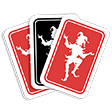Shogi, often referred to as Japanese chess, is a captivating and strategic board game that has a rich history dating back centuries. This traditional Japanese game offers an intricate and intellectually stimulating gaming experience that has enthralled players in Japan and around the world.
In this comprehensive guide, we will delve into the rules, instructions, and strategies of Shogi, allowing you to embark on your journey to master this ancient and revered board game. Whether you’re a novice or an experienced player, Shogi Board Game promises an enriching and stimulating gaming experience that transports you into the world of strategic brilliance.
A Glimpse into the History of Shogi
Before we immerse ourselves in the rules and instructions of Shogi, let’s take a moment to appreciate its historical significance. Shogi traces its roots to India, where it evolved from the Indian game chaturanga, just like its western counterpart, chess. The game made its way to Japan during the Heian period (794-1185 AD) and underwent significant changes to become the Shogi we know today.
Throughout its long history, Shogi has been more than just a pastime; it has been a symbol of Japanese culture and intellectual prowess. From the imperial court to common households, Shogi has captured the hearts and minds of players, emphasizing the value of strategic thinking and tactical acumen.
Understanding the Shogi Board
Shogi is played on a 9×9 grid, making it larger than the standard 8×8 chessboard. Each player starts with an army of 20 pieces, and the objective is to capture your opponent’s king, known as the “Ou.”
Shogi Rules and Gameplay
Shogi’s gameplay is characterized by its unique piece movements and rules. Here is an overview of the key rules and gameplay:
1. Objective:
The primary goal of Shogi is to checkmate your opponent’s king (Ou). Unlike chess, where you aim to capture the king, in Shogi, you aim to trap the king so that it has no legal moves to escape. When the king is in this state, it is considered checkmated, and the game concludes.
2. Piece Types:
Shogi introduces a variety of pieces, each with its own set of movements:
- Ou (King): Moves one square in any direction.
- Kin (Gold General): Moves one square in any direction, except diagonally backward.
- Gin (Silver General): Moves one square diagonally or one square forward.
- Keima (Knight): Moves in an L-shape: two squares forward and one square to the side.
- Kyosha (Lance): Moves any number of squares forward along a straight line.
- Kakugyo (Bishop): Moves diagonally any number of squares.
- Hisha (Rook): Moves horizontally or vertically any number of squares.
- Fuhyo (Pawn): Moves one square forward. When promoted, it gains more movement options.
3. Promotion:
When a piece advances to the last three ranks of the opponent’s side or enters the promotion zone, it can be promoted. Promotion typically enhances a piece’s abilities, adding to its movement options.
4. Drop Rule:
Captured pieces become the property of the capturing player and can be reintroduced onto the board on their turn as a move. This adds a layer of complexity to the game as you can strategically deploy captured pieces.
5. Piece Promotion:
Some pieces, when they reach the promotion zone on the opponent’s side, can be promoted. Promoted pieces have different abilities, adding an additional dimension to your strategy.
Also See: Rithmomachia Board Game Rules and Instructions for How to Play
Strategies for Success
To excel in Shogi, you must develop a keen understanding of the game’s unique pieces and movements. Here are some key strategies to consider:
1. Central Control:
Control the center of the board to limit your opponent’s mobility and create opportunities for your pieces.
2. Pawn Structure:
Carefully manage your pawn structure to protect your king and create openings for your pieces.
Piece Development: Activate and coordinate your pieces to create threats and control the board.
3. King Safety:
Safeguard your king by moving it to a secure position and using other pieces as a shield.
4. Piece Promotion:
Strategically promote your pieces to enhance their abilities and create more powerful threats.
Shogi Notation
Understanding Shogi notation is essential for following and recording games. Shogi uses a combination of numbers and letters to denote moves. For example, P-7f represents a pawn move from the 7th file to the 7th rank (P-7f). Pieces are represented by the following letters:
- K: King
- R: Rook
- B: Bishop
- G: Gold General
- S: Silver General
- N: Knight
- L: Lance
- P: Pawn
Promoted pieces are denoted with a + sign. For example, P-7f+ represents a promoted pawn move.
Conclusion
Shogi, the Japanese chess, offers a deep and intellectually satisfying gaming experience that has stood the test of time. As you embark on your journey to master this ancient board game, remember its cultural significance and its role in nurturing strategic thinking in Japan and beyond. Whether you’re a beginner or an experienced player, Shogi promises a captivating and challenging gaming experience that delves deep into history and intellect. So, set up your Shogi board, hone your strategic prowess, and may you become a formidable player in this timeless game of strategy and intellect.




